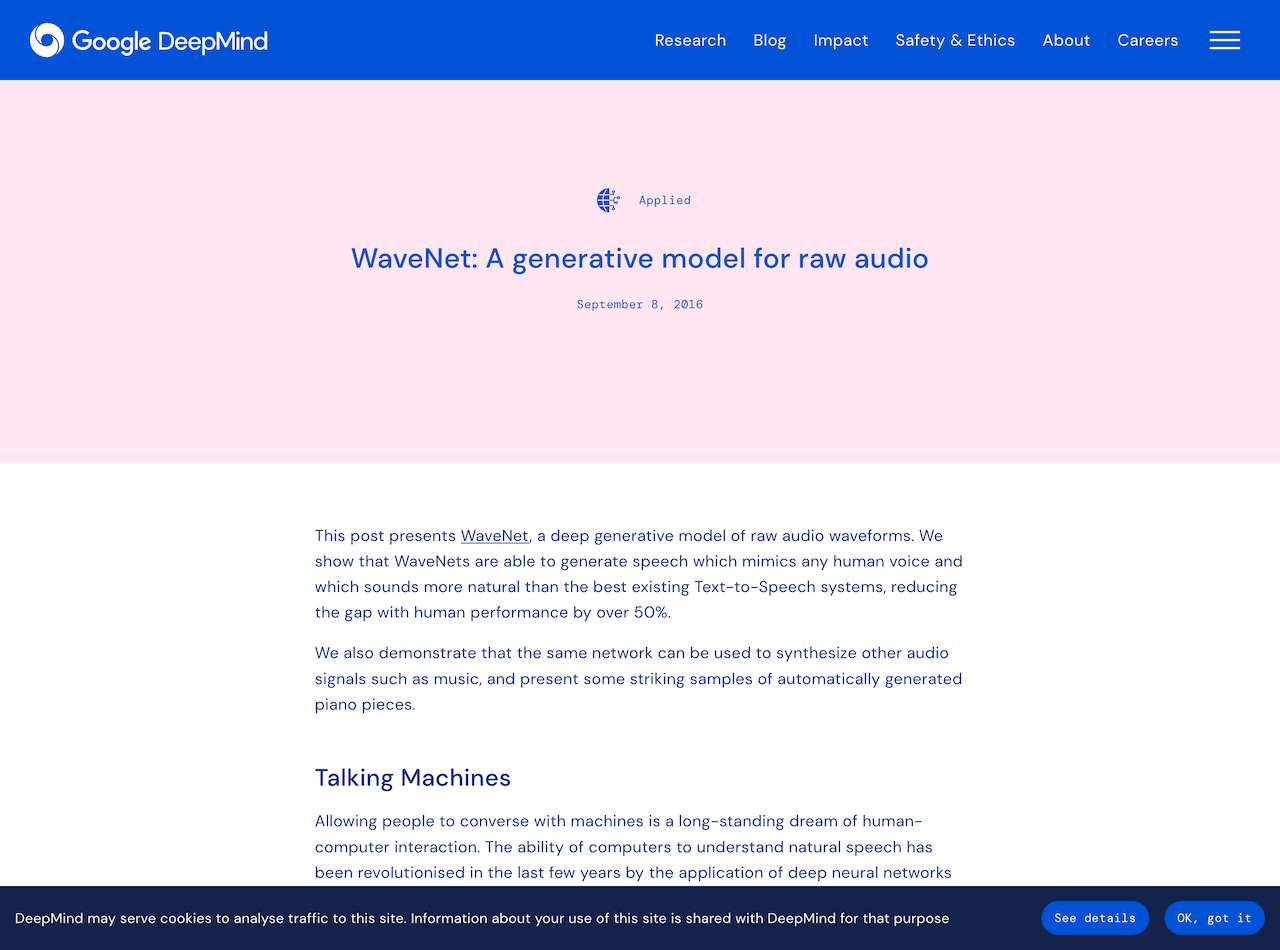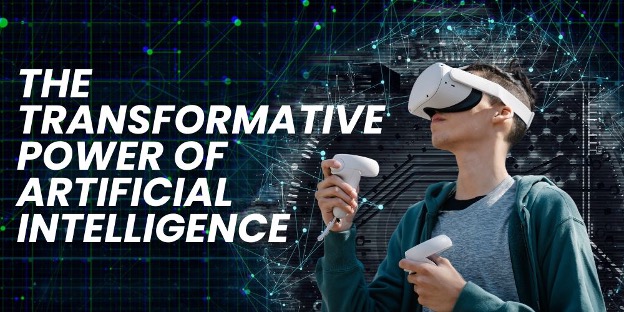Both WaveNet and Tacotron have made significant contributions to the field of audio generation and have been widely used in various tools and applications. However, it’s important to note that their utility and applicability depend on the specific use case and requirements. The choice of technology often varies based on factors such as desired output quality, computational resources, and the specific goals of the application.
Wavenet
WaveNet‘s autoregressive neural network architecture has proven to be effective in generating high-quality audio waveforms with fine-grained details. It has been successfully applied in text-to-speech synthesis, music generation, and audio effects. WaveNet’s ability to capture the intricacies of audio signals has made it a popular choice for applications where audio fidelity and realism are crucial.

Tacotron
on the other hand, focuses on converting text into speech by generating mel-spectrograms and using vocoders to synthesize audio waveforms. Tacotron models have been widely adopted in various voice assistants, virtual assistants, and speech synthesis applications. They excel at producing natural-sounding speech with appropriate prosody and intonation, making them valuable in applications where conveying linguistic content is of primary importance.

The choice between WaveNet and Tacotron, or any other audio generation technology, depends on the specific requirements of the tool or application. If high-fidelity waveform generation is crucial, WaveNet might be preferred. If the emphasis is on converting text into natural-sounding speech, Tacotron can be a strong contender. However, it’s worth noting that the field of audio generation is rapidly evolving, and new technologies and approaches continue to emerge, expanding the range of available options.
Ultimately, the most useful technology in the market depends on the specific needs, preferences, and constraints of the tools and applications being developed, as well as the advancements and breakthroughs in the research community. It is advisable to consider the strengths and limitations of each technology and choose the one that aligns best with the desired outcomes and constraints of the project.
Let’s consider an example of a voice assistant application that requires both high-quality audio generation and natural-sounding speech synthesis.
In such a scenario, a combination of WaveNet and Tacotron can be utilized. Tacotron can be used to convert text inputs into mel-spectrograms, capturing the linguistic content, intonation, and prosody of the speech. Tacotron models are well-suited for this task as they excel in producing natural-sounding speech from textual input.
Once the mel-spectrograms are generated, they can be fed into WaveNet, which specializes in waveform generation. WaveNet can take the mel-spectrograms as input and generate high-quality audio waveforms with fine-grained details, capturing the nuances and realism of the synthesized speech. This ensures that the generated audio has both the desired linguistic content and the high-fidelity waveform representation.
By combining Tacotron and WaveNet, the voice assistant can deliver a comprehensive and high-quality user experience. Tacotron handles the conversion of text into mel-spectrograms, preserving the linguistic aspects, while WaveNet takes care of generating realistic and high-fidelity audio waveforms based on those spectrograms. This combination allows for the production of natural and lifelike speech, enhancing the overall user interaction with the voice assistant.
It’s important to note that the specific choice of models, architectures, and techniques within Tacotron and WaveNet can vary depending on the advancements in the field and the availability of newer and more efficient approaches. The example above showcases the potential synergy between technologies that specialize in different aspects of audio generation to achieve the desired outcome in a voice assistant application.















+ There are no comments
Add yours